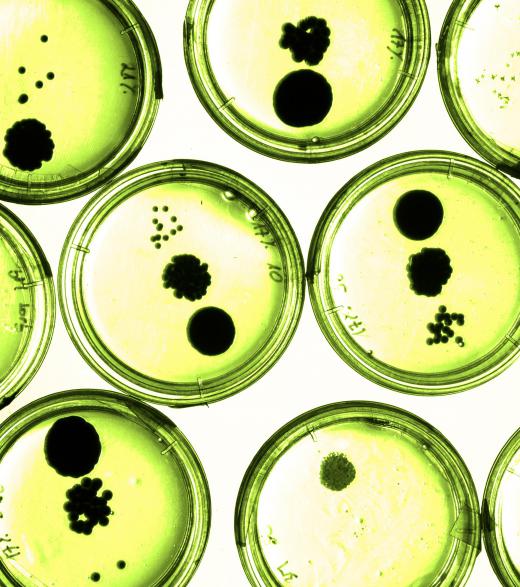What is a Micrograph?
A micrograph is an image taken with a camera attached to a microscope or other magnifying technology. Micrographs can show distinct detail on the nanometer scale, meaning that even a cell’s organelles can be captured with high clarity. It also is known as a photomicrograph.
The development of a micrograph is attributed to Reginald Fessenden, a Canadian inventor, sometime in the early 1900s. In order to create a micrograph, a camera must be attached to the microscope. Many modern microscopes are designed with a specific port for a camera, though a camera also could be placed where a microscope’s eyepiece usually is attached. After the camera is in position, the sample is placed on the stage of the microscope like normal, and magnified images can be taken.

There are different types of micrographs that are produced by different types of microscopes. The traditional microscope that uses light from bulbs or lasers to illuminate the sample creates images called light micrographs. Many cameras on microscopes are directly connected to a computer so that images can be stored and analyzed electronically. Another type is the electron micrograph, which is produced by an electron-scanning microscope.

Besides simply capturing a single moment, cameras that take micrographs can be set to take a series of images over time, called time-lapse imaging, to show how a sample changes over minutes or hours. Cameras also can be calibrated to take pictures in different locations automatically. This will chronicle how different specimens on different spots of the slide or Petri dish are reacting to a given stimulus.
Micrographs are essential to scientists who are working on experiments at the cellular and sub-cellular levels. A camera can capture a micrograph of a relatively large object, such as an entire slice of a mouse brain, as well as a very small object, such as a single mitochondria within a cell. How detailed the picture is depends directly upon the level of magnification of the microscope’s lenses. Depending on the type of camera, the images might be in black and white or in color. Some cameras are capable of detecting non-visible wavelengths and can create micrographs of specimens in the ultraviolet and infrared ranges.
Micrographs are used in the fields of medical research, botany and biology. In addition to academic fields of study, micrographs often are used in forensic science. The pictures can be used in court cases as proof of trace evidence that was found, for example, at the scene of a crime or on a suspected weapon.
AS FEATURED ON:
AS FEATURED ON:












Discuss this Article
Post your comments